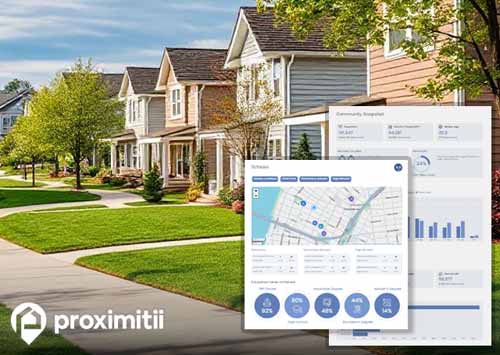| Statistic | Reportedincidents | /100k people | Germantown/100k people | Wisconsin/100k people | National/100k people |
| Total crime | 249 | n/a (estimate) | 1,182 | 1,433 | 2,119 |
| Murder | 0 | n/a | 0.0 | 4.2 | 5.0 |
| Rape | 0 | n/a | 0.0 | 34.8 | 37.5 |
| Robbery | 0 | n/a | 0.0 | 39.4 | 60.6 |
| Assault | 13 | n/a | 61.7 | 200.1 | 256.1 |
| Violent crime | 13 | n/a (estimate) | 62 | 279 | 359 |
| Burglary | 4 | n/a | 19.0 | 117.2 | 229.2 |
| Theft | 228 | n/a | 1,082.3 | 875.6 | 1,272.1 |
| Vehicle theft | 4 | n/a | 19.0 | 161.3 | 258.8 |
| Property crime | 236 | n/a (estimate) | 1,120 | 1,154 | 1,760 |


The Germantown crime rates are 26.5% lower than the national average. There are two main categories of crime - violent crime and property crime. Violent crime consists of murder, rape, robbery and assault, while property crimes include burglary, theft and vehicle theft. There were a total of 11 violent crimes in Germantown (52 per 100,000 people), which is 85.8% lower than the national average and there were a total of 347 property crimes (1656 per 100,000 residents) which is 15.3% lower than average.
With only 52 incidents per 100,000 people, Germantown boasts an exceptionally low rate of violent crimes, positioning it as one of the safest cities in the United States. Given these low violent crime rates, Germantown has become an appealing destination for individuals in search of a secure and welcoming place to establish their new home.
In a remarkable testament to the city's commitment to safety, Germantown reported a murder rate of 0. This could indicate that it is a very safe place to live, but also serves as an inspiration to other urban areas striving for safer communities. Examining the full crime report will provide a complete overview of all crimes - violent and property.
Before you decide to relocate, it’s always good to ask yourself “Is Germantown a safe place to live?” Although the answer might not be that simple, as some areas are safer than others, getting a good feel for the overall rate of crime can definitely be helpful. Overall, the Germantown crime rate is 27% lower than the national average. If we break that down daily, that translates into 0.98 crimes per day - 0.03 violent crimes and 0.95 property crimes.
Year-over-year crime data allows residents and potential residents to assess the crime in Germantown. A decrease in crime rates may indicate improving safety, while an increase could raise concerns. The year-over-year crime rate in Germantown has decreased by 10.1%. Violent crimes have decreased by 15.4%, while property crimes have decreased by 9.9%. By comparing crime rates from one year to the next, authorities and communities can identify trends and patterns in criminal activity. This helps in understanding whether crime is increasing, decreasing, or remaining stable over time.
Limited employment opportunities or a prevalence of low-wage jobs can result in higher rates of unemployment and underemployment. Regions where individuals grapple with joblessness or meager wages may exhibit greater vulnerability to an uptick in crime due to financial instability. While areas that have strong employment rates, often will see a reduction in overall crime. Germantown, for instance, reports an unemployment rate of 1.4%, which differs from the national average of 4.7%.
Rising cost of living expenses, including increased housing costs, grocery, utility and healthcare expenditures, can induce financial strain on individuals and families, particularly those with limited financial resources. Such economic stress may propel individuals towards crime, including theft or burglary, as a means of addressing their financial hardships. Conversely, cities characterized by a lower cost of living may alleviate economic pressures, potentially resulting in a reduced crime rate. In Germantown, the cost of living is 5.8% higher than the national average, reflecting a more affordable economic environment that could contribute to a decrease in crime levels.
Elevated rental costs can generate economic strain for both individuals and families, particularly those with restricted financial means. When a substantial proportion of one's income is allocated to housing costs, it often leaves limited resources for fulfilling other crucial necessities such as groceries, healthcare and education. This financial pressure can fuel desperation, potentially prompting individuals to resort to criminal actions, including theft or fraud, as a means of coping with their financial hardships. In Germantown, the average monthly rent stands at $1,061, while the national average is $949 per month.

Why stop at city-to-city? With Local Insights, you can compare neighborhoods, zip codes, or even exact addresses. Access 300+ hyperlocal data points—from schools and crime to housing and amenities—to see which area is the better fit.

| Item | Germantown | Wisconsin | National |
| Law enforcement employees (officers & civilians) | 43 | 9,355 | 558,732 |
| Police officers & civilians /1000 residents | 2.2 | 2.4 | 3.3 |
| State | Total offenders | Wisconsin /100K | National /100K |
| Wisconsin | 24,983 | 456 | 266 |
| City | Population | Violent crime/100k people | Property crime/100k people | Total crime/100k people |
| Nashotah, WI | 1,287 | 39 | 162 | 201 |
| Thiensville, WI | 3,149 | 0 | 213 | 213 |
| Bayside, WI | 4,530 | 23 | 229 | 252 |
| Merton, WI | 3,721 | 53 | 220 | 273 |
| River Hills, WI | 1,441 | 0 | 384 | 384 |
| Hartland, WI | 9,317 | 68 | 341 | 409 |
| Lannon, WI | 1,184 | 83 | 345 | 429 |
| Germantown, WI | 20,142 | 62 | 1,120 | 1,182 |
| City | Population | Violent crime/100k people | Property crime/100k people | Total crime/100k people |
| Charleston, IL | 20,141 | 360 | 1,793 | 2,153 |
| Albany, CA | 20,145 | 139 | 2,493 | 2,631 |
| Ferndale, MI | 20,139 | 205 | 1,528 | 1,733 |
| Cocoa, FL | 20,151 | 1,082 | 3,553 | 4,636 |
| South St. Paul, MN | 20,132 | 349 | 1,322 | 1,671 |
| Germantown, WI | 20,142 | 62 | 1,120 | 1,182 |